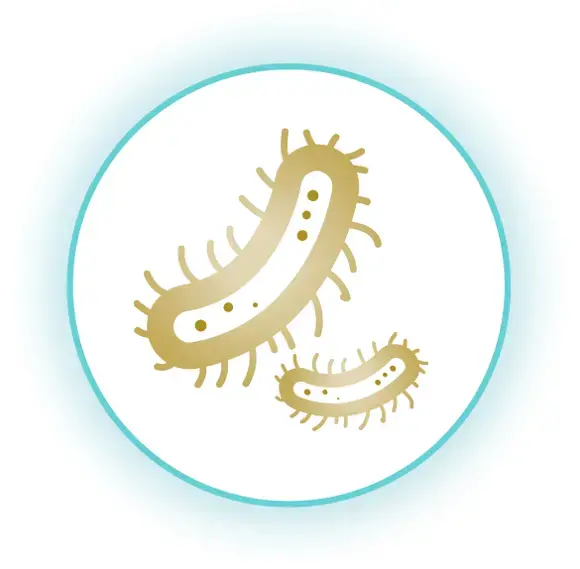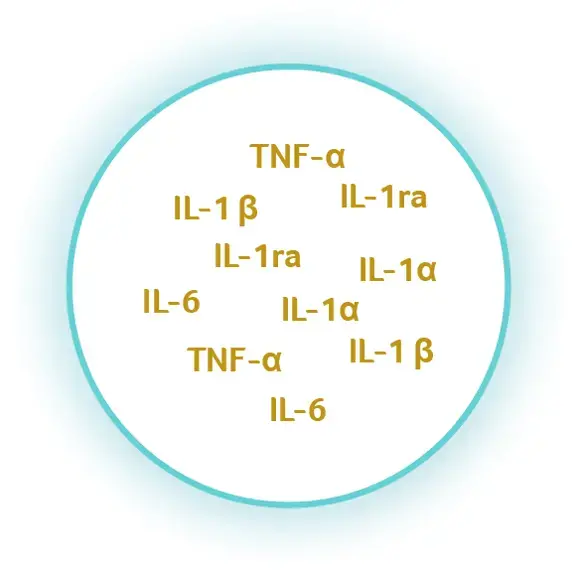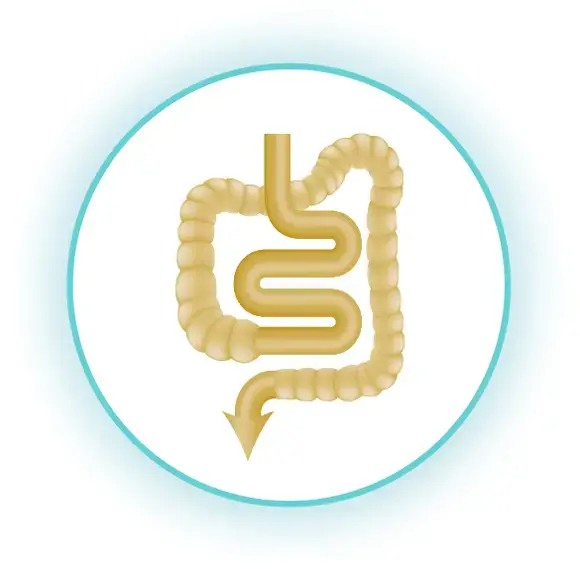NAN® OPTIPRO® - Immune Health

IMMUNE HEALTH
Supporting a healthy and balanced immune system
Infancy is a period of constant change. Not only are infants’ bodies and brains growing and developing fast, they are exposed to a range of antigens in their
environment and diet. The right nutrition is essential to build and maintain a healthy and balanced immune system. This helps protect infants from infections, such as gastrointestinal and respiratory infections.
HMOs – GUARDIANS OF IMMUNE HEALTH
Recent research shows that a group of bio-active components called Human Milk Oligosaccharides (HMOs) play a crucial role in infant immune health. As part of our ambition to make infant formula as close to the composition of breast milk as possible, NAN® OPTIPRO® is the first to include 2’FL, the most abundant HMO in breast milk, in combination with probiotics and optimised protein.
Clinical studies show that adding a HMO such as 2’FL to infant formula supports a child’s immune health, with fewer pathogenic bacteria in the gut and fewer infections.1,2
NAN® OPTIPRO® 1 contains 2’FL (1g/L), clinically proven to:

HELP REDUCE THE ABUNDANCE OF PATHOGENIC BACTERIA1
Lower abundance of Clostridium difficile
Lower levels of klebsiella pneumonia*
*in a subgroup of infants born by C-section.

SUPPORT IMMUNE ACTIVITY SIMILAR TO BREASTFED INFANTS3
Lower plasma levels of inflammatory cytokines.

HELP REDUCE RESPIRATORY INFECTIONS4
66% fewer respiratory infections.
NAN® OPTIPRO® 2, 3 and 4 contain 2’FL (0.3g/L), which preclinical data has shown to:

EDUCATE THE DEVELOPING IMMUNE SYSTEM5-10
Enhance antibody responses to vaccines.

PROMOTE BENEFICIAL BACTERIA11-13
Support the growth of Bifidobacteria.

STRENGTHEN THE GUT BARRIER14,15
Protect mucosal barrier function.
PROVEN PROBIOTICS
The gut microbiota plays an important role in modulating the immune function of an infant, and so influences lifelong health. Research shows that some probiotics such as Bifidobacterium lactis support immune health.16-18
NAN® OPTIPRO® 1 contains B. lactis, clinically proven to support an infant’s gut immune health:

SUCCESSFULLY COLONISES THE GUT MICROBIOTA19-21
Over 80% of infants were colonized by B.Lactis

SUPPORTS THE DEVELOPMENT OF A HEALTHY, BALANCED GUT MICROBIOTA21
Increases beneficial gut bacteria (Bifidobacteria)
Decreases potential pathogenic bacteria

ENHANCES INTESTINAL ANTIBODY RESPONSES19
Up to 3x greater IgA secretion
For older ages, NAN® OPTIPRO® 2, 3 and 4 also contain B. lactis, clinically proven to support an older infant’s or toddler’s immune health:

PROTECTS OLDER INFANTS AGAINST GI INFECTIONS22,23
Reduces the prevalence of community acquired, acute diarrhoea by 50%.
Reduces number of episodes of acute diarrhoea in day care centres by 58%.

ENHANCES GUT IMMUNE HEALTH IN TODDLERS24,25
Leads to successful intestinal colonisation
Enhances intestinal IgA and poliovirus-specific IgA secretion
References:
1. Alliet P et al., Abstract accepted at WCPGHAN 2020.
2. Storm HM et al., Glob Pediatr Health. 2019;6.
3. Goehring KC et al., J Nutr. 2016;146:2559–66.
4. Reverri EJ et al., Nutrients. 2018;10:1346.
5. Angeloni S et al., Glycobiology. 2005;15:31–41.
6. Jantscher-Krenn E et al., Minerva Pediatr. 2012;64:83-99.
7. Van den Elsen LWJ et al., Benef Microbes. 2019;10:279-291.
8. Xiao L et al., J Nutr. 2019;149:856–869.
9. Xiao L et al., Front Immunol. 2018;9:452.
10. Azagra-Boronat I et al., Front Immunol. 2018;8:372.
11. Yu ZT et al., Glycobiology. 2013 ;23(11):1281-92.
12. Hoeflinger JL et al., J Agric Food Chem. 2015;63(12):3295–302.
13. Marcobal A et al., Cell Host Microbe. 2011;10:507–514.
14. Sprenger N et al., Poster N-P-178, ESPGHAN, Glasgow, June 2019.
15. Natividad JM et al., Abstract at AAP Annual Conference, New Orleans, October 2019.
16. Holscher HD et al., J Parenter Enteral Nutr. 2012;36:106S–117S.
17. Yuniaty T et al., Paediatr Indones 2013;53:89–98.
18. Langhendries JP et al., J Pediatr Gastroenterol Nutr 1995;21(2):177–81.
19. Holscher HD et al., J Parenter Enteral Nutr. 2012;36:106S–117S.
20. Langhendries JP et al., J Pediatr Gastroenterol Nutr. 1995;21:177–81.
21. Yuniaty T et al, Paediatr Indones 2013;53:89–98.
22. Chouraqui JP et al., J Pediatr Gastroenterol Nutr. 2004;38:288-292.
23. Weizman Z et al., Pediatrics. 2005;115:5–9.
24. Fukushima Y et al., Biosci Microflora. 1997;16:65-72.
25. Fukushima Y et al., Int J Food Microbiol. 1998:42:39–44.
IMPORTANT NOTICE
We believe that breastfeeding is the ideal nutritional start for babies and we fully support the World Health Organization’s recommendation of exclusive breastfeeding for the first six months of life followed by the introduction of adequate nutritious complementary foods along with continued breastfeeding up to two years of age.
We also recognize that breastfeeding is not always an option for parents. We recommend healthcare professionals to inform parents about the advantages of breastfeeding. If parents consider not to breastfeed, healthcare professionals should inform parents that such a decision can be difficult to reverse and that the introduction of partial bottle-feeding will reduce the supply of breast milk. Parents should consider the social and financial implications of the use of infant formula.
As babies grow at different rates, healthcare professionals should advise on the appropriate time for a baby to begin eating complementary foods.
Infant formula and complementary foods should always be prepared, used and stored as instructed on the label in order to avoid risks to a baby’s health.